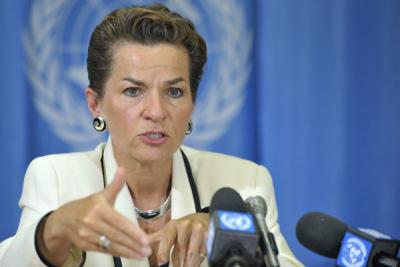Unlike acclaimed unproductive previous climate talks, negotiators and world leaders are optimistic that the Paris climate conference is bound to be a success.

From scientific studies, more intensified now than before, heat waves, drought, desertification, earthquake, sea level rise and landslides are various adverse effects stemming from unabating global warming.
A research by American Meteorological Society reveals that there is high tendencies that global temperature will rise by 3.5 to 7.4 degree Celsius in less than 100 years from now. This should be of great concern for earth inhabitants.
Recent debates in some quarters on effectiveness of long and short term goals have generated conflicting mixed perceptions. A flashback to Millennium Development Goals (MDGs), reveals that MDGs was erected on 15 years long term goal, no concise short term mechanism was put in place to checkmate level of progress made. No wonder, its woeful performance.
Towards the success of the long term agreement, short term goals should be a barometric gauge. Long term goal is unarguably the journey’s final destination; having a tint of foresight while, short term goal is the yardstick. The journey of a thousand miles starts with a step. Long term goal without checkmating mechanisms is bound to fail while, at the long run, adoption of only short term goals have been tested not to be efficient for climate change mitigation and adaptation, blended radical road map is all it entails for fruition. Intended Nationally Determined Contributions (INDCs) inclusion of Feasible short term goals incorporated with committed long term target from all odds will generate a positive outcome.
Kyoto Protocol has been perceived to set emission reductions targets for developed countries while neglecting developing countries. It has been criticised to be “elitism” in structure. For Paris conference not to fail, it must be all encompassing in contrast to Kyoto Protocol, no country ought to be left out. Without folding our arms, this is a collective task we needed to swiftly address because, if we refused to act, it might backfire and this could be dangerous.
In shedding lights on the urgency for global decisive climate action, International Energy Agency (IED) recently envisaged that “current pledges will have a positive impact on future energy trends but will fall short of the major course correction required to meet the 2 degree Celsius goal”. One is then tempted to ask, Is it that the current pledges won’t have any impact towards protecting the ozone layer? Why will it fall short having taken Co2 reduction steps? That is to tell us the level of emergency required in resuscitating our planet from further deterioration. In essence, IEA’s view is a clarion call for nations of the World to step up their commitments and sincerity towards coming up with concise radical climate change mitigation and adaptation approaches.
This further highlighted why it is expedient for world leaders to ensure workability of the conference resolutions and stick to the plans. While sticking to the plans, periodic review of progress made by nations every five years should be encouraged.
In phasing out fossil fuels and migrating to renewable energy sources, knowing fully well that clean energy is somehow expensive, most especially, financing clean efficient energy projects in developing countries could be clogs in the progress wheel of clean energy total migration. Without clear finance stance, the pledges might not move beyond words of mouth. Finance methods to be adopted in catapulting INDCs into reality shouldn’t be vague, it should be crystal clear and feasible and be reviewed from time to time.
By Odewale Abayomi Joseph
